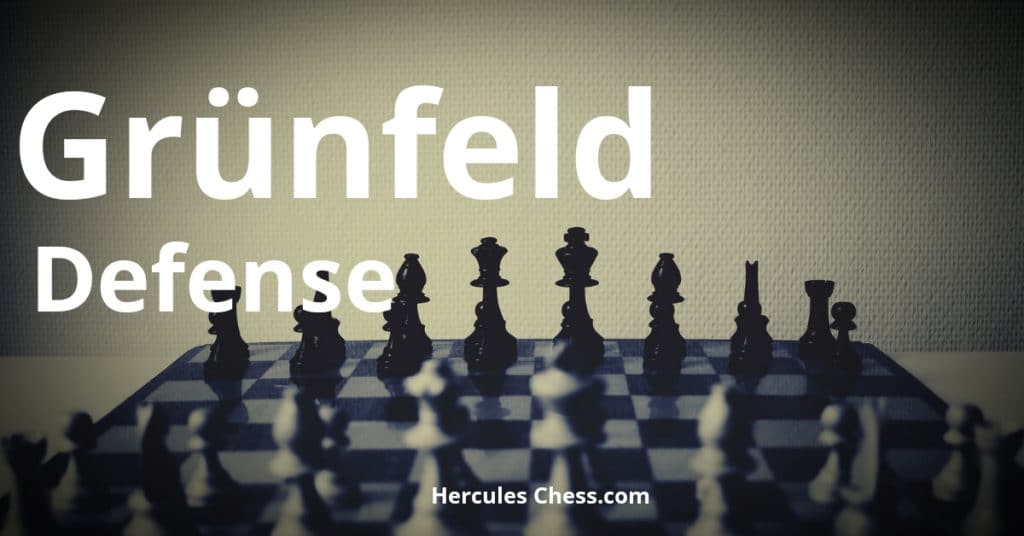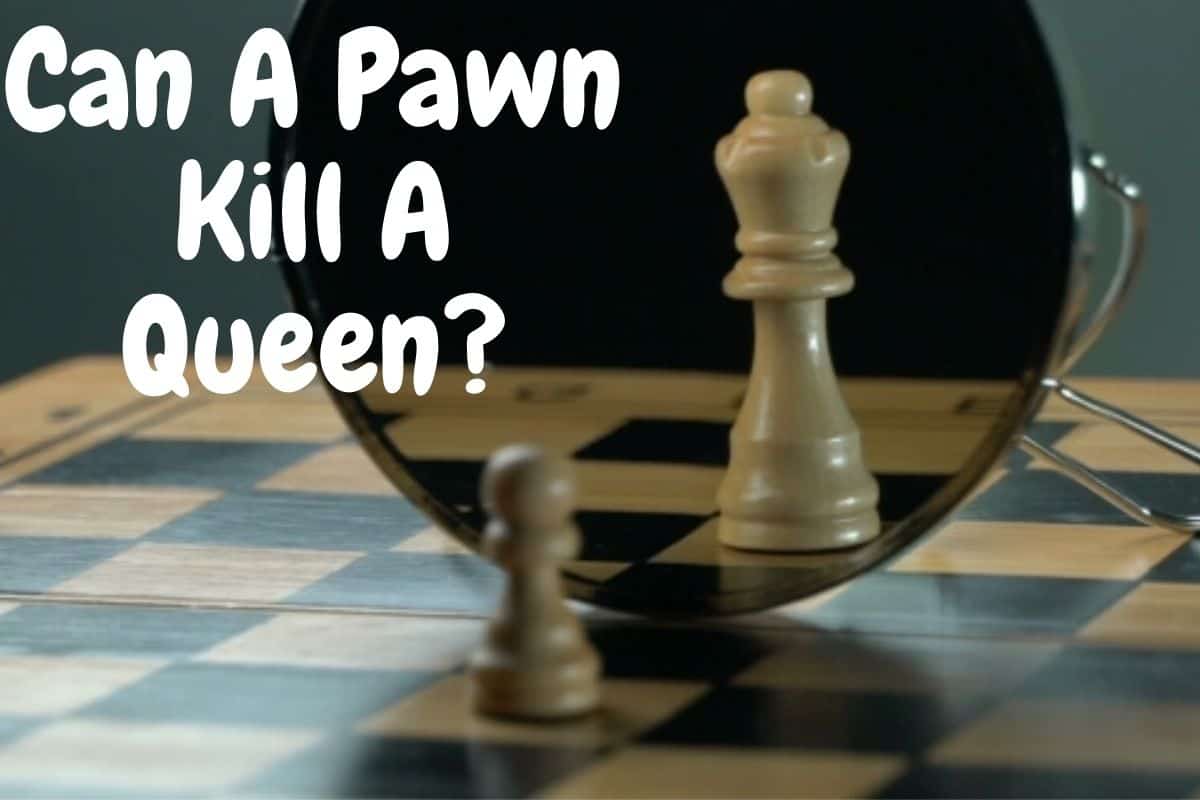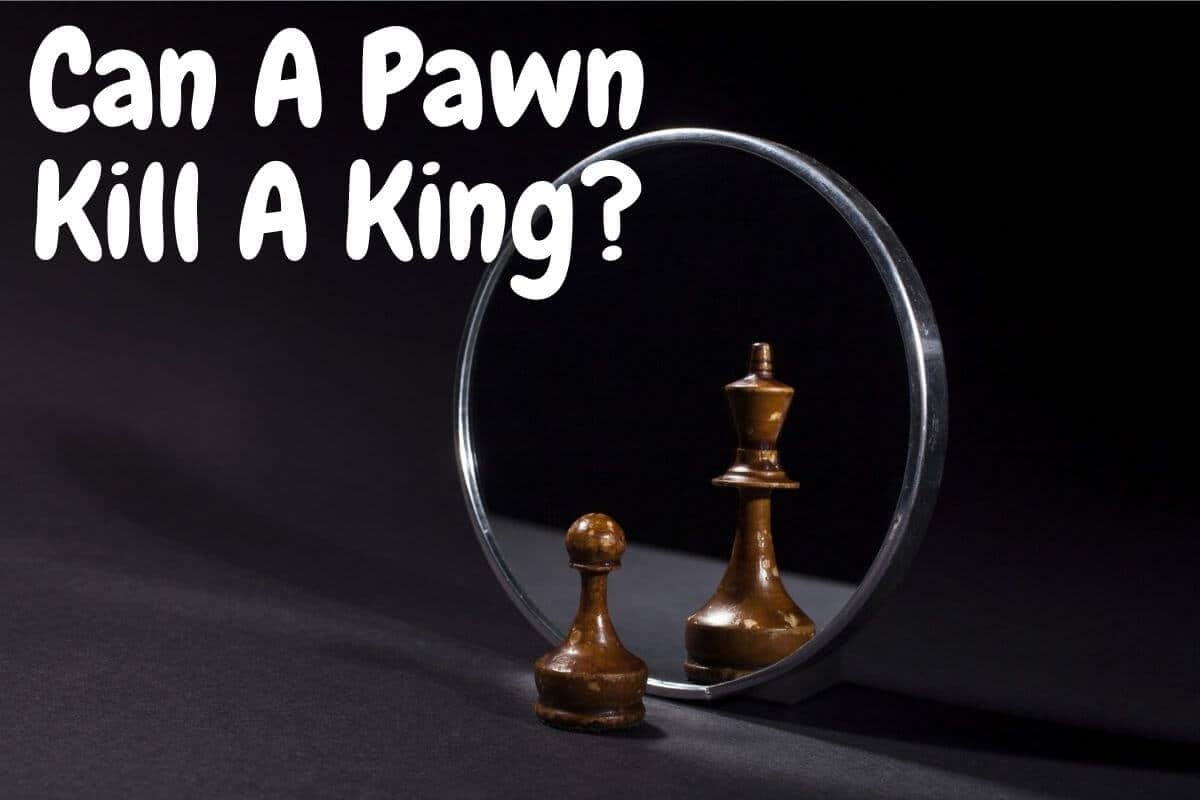The Grunfeld is one of the most complex and energetic modern chess openings. Throughout chess history it has been a favorite weapon for many dynamic and positional players, including four of the greatest world champions: Alekhine, Botvinnik, Fisher and Kasparov. The opening was invented by Ernst Grunfeld in 1922 and first introduced in his game against the world champion-to-be Alexander Alekhine.
Below is a pgn of the first ever Grunfeld game played between the Alekhine and Grunfeld himself. Open the pgn from mobile view
Game 1: Alekhine vs Grünfeld (Vienna 1922)
Recommended book: The Grunfeld Defense by Nigel Davies
What is the Grunfeld?
But what is the Grunfeld and what kind of positions arrive from the Grunfeld Defense?
The first moves 1.d4 Nf6 2.c4 g6 seem to indicate that Black will opt for quick castling and only then start to fight for control of the center. This is called the King’s Indian Defense and often gives quite a closed position. But after 3.Nc3 it is also possible to play 3…d5!? immediately fighting in the center.
Starting position of the Grunfeld Chess Opening
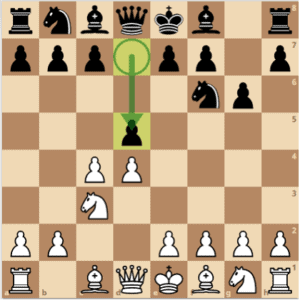
Here White has a great variety of possibilities. The two main systems start with:
4.Nf3 Bg7 and with
4.cxd5 Nxd5 5.e4 Nxc3 6.bxc3 Bg7.
In this position White again has plenty of opportunities, ranging from 7.Bb5+ and 7.Qa4+ to 7.Nf3 and 7.Bc4. After 7.Bc4 it is customary for Black to set up a counterplay against White’s centre with 7…c5 8.Ne2 Nc6 9.Be3 0-0 10.0-0
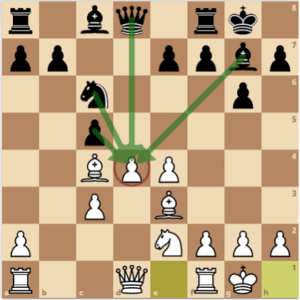
The pawn structure here is unsurprisingly known as the Grunfeld centre. Though many different structures can occur from the Grunfeld Defense, they all have one thing in common: Black allows White to establish a strong, broad centre with the intention of putting it under pressure. Black in the Grunfeld has won many games by a successful demolition of the white centre. Conversely, White has won many games by keeping a big centre and utilising it at a favourable moment.
The Grunfeld Defense is certainly not for people with weak nerves. Black will often face heavy aggression, but in return he can end up in a pleasant endgame with a distant passed pawn on the queenside.
Grunfeld Classical Exchange Mainlines
The Classical Exchange Variation is one of the three main systems for White in the Grunfeld (the two others being the Modern Exchange Variation and the Russian System). The main position arises after 11 moves, after which it is up to White to make his choice.
Firstly, let’s look at the opening moves:
1.d4 Nf6 2.c4 g6 3.Nc3 d5 4.cxd5 Nxd5 5.e4 Nxc3 6.bxc3 Bg7 7.Bc4 0-0 8.Ne2 c5 9.Be3 Nc6 10.0-0
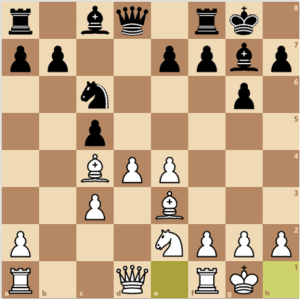
Black has put as much pressure as possible on the centre with …c5 and his minor pieces, and White in turn has protected his centre.
WARNING: For positional reasons, it is not a particular good idea to accept the pawn sacrifice on c5.
After 10.dxc5 Black can quickly gain plenty of compensation, either by slow play with 10…Qc7 and 10…Qa5 or with immediate action such as 10…Ne5!? 11.Bb3 Qc7. After the latter White needs to act quickly in order not to be worse and should go for 12.Nf4 e6!, when Black has good compensation but White also should not be too unhappy. It’s important to realise that Black will often sacrifice a pawn with …b6, allowing the exchange of the weak c5-pawn, as this same pawn is also somewhat restricting for Black. In return Black secures open files on which to attack the pawns on c3 and a2. Note that Black is much worse after 12…Ng4? 13 Nd5! Nxe3? 14.Nxc7 Nxd1 15.Rxd1 Bxc3+ 16.Ke2 Rb8 17.Nd5! Bf6 18.Nxf6+ exf6 19.Ke3. White has good winning chances in this endgame.
10.e5 is also not a common move, as after this Black will find it easy to establish control of the light squares straight away. The white bishop on e3 could easily become very ugly in the long run, while conversely the g7-bishop may later escape via f8.
10…Bg4 11.f3 Na5
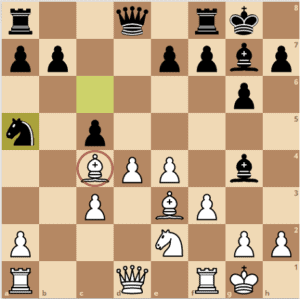
In this system it is all about the struggle for the centre. White has managed to organise his pieces in such a way to maintain his centre, but that doesn’t mean that Black’s strategy has failed. White has been forced to make concessions to keep his centre intact. 11.f3 was necessary to break the pin on the e2-knight, but this has left the e3- bishop and the dark squares in general undefended.
Black’s idea with 11…Na5 is to play around the white pawns and establish a stronghold on c4. But first White has an interesting possibility in 12.Bxf7+!?, winning a pawn in return for some positional compensation. This is called the Seville Variation. It was reintroduced by Karpov against Kasparov in their 1987 world championship match in Seville. Before this it had been known to be generally harmless for Black, but Karpov arrived for the match with a new understanding of the positional features in the position, and gained the advantage in many games between the two.
It’s more standard to refrain from winning the pawn with 12 Bd3, which is most often answered with 12…cxd4 13.cxd4 Be6, aiming at the c4-square.
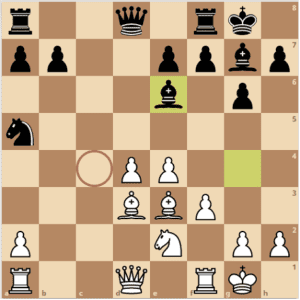
Now there are two very interesting possibilities for White. Firstly, there is the tempting 14.d5!?, a move very much for the brave. This, of course, involves an exchange sacrifice and is an attempt to unbal- ance the game. Many years ago it was the main choice for some time. Then White had a bad decade in the 1980s and players started to look elsewhere for improvements. However, recently Kobalija has revived the line and it is now considered as relevant as ever. The choice to include three games in this book is mainly due to my fascination with the line, but also because it has not been covered well enough in other recent Grunfeld works.
While 14.d5 was being repaired, White players enjoyed some success with the pawn sacrifice 14 Re1!?. The idea is similar to 14.d5: material is offered in order to prevent 14…Bc4 and to gain some time for developing pieces. Time has shown that this is not particularly dangerous for Black and the popularity of 14.Re1 has somewhat waned. Still, this is a very relevant line and the score for White is more than he would normally expect in a main line of an opening.
Seville Variation
1.d4 Nf6 2.c4 g6 3.Nc3 d5 4.cxd5 Nxd5 5.e4 Nxc3 6.bxc3 Bg7 7.Bc4 0-0 8.Ne2 c5 9.Be3 Nc6 10.0-0 Bg4 11.f3 Na5 12.Bxf7+
Starting the position of the Seville Variation
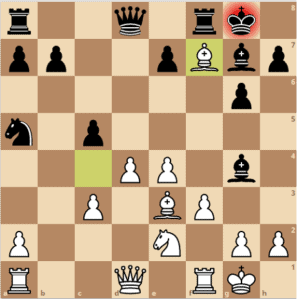
As I mentioned before, Karpov reintroduced this variation against Kasparov in their 1987 match with some success. The main idea be- hind the system is not so much to win a pawn, as to play against Black’s bishop on g7. White usually obtains a set-up with a pawn on e5 and, if he is lucky, also a pawn on g5, completely burying the bishop.
This kind of play suited Karpov particularly well, as his main strength is to restrict his opponents’ opportunities to a level where they end up wondering why they put their pieces on such stupid squares.
After 12.Bxf7+ the game continues 12…Rxf7 13.fxg4 Rxf1+ 14.Kxf1

Statistics
In 373 games, White has scored 52%, while 42% of all the games have been drawn with this opening. This line has a reputation for being a little bit boring, but in reality the position is very much unbalanced, and both players have real chances to win the game.
Theoretical?
Mainly from Black’s point of view, but not terribly so. It seems to be more pressing to know how to create counterplay than how to defend against it because if nothing happens, Black will find himself a pawn down and seriously close to being lost. That said, these positions are about chess strength as much as chess theory.
Sokolsky Attack (14.d5!?)
1.d4 Nf6 2.c4 g6 3.Nc3 d5 4.cxd5 Nxd5 5.e4 Nxc3 6.bxc3 Bg7 7.Bc4 0-0 8.Ne2 c5 9.Be3 Nc6 10.0-0 Bg4 11.f3 Na5 12.Bd3 cxd4 13.cxd4 Be6 14.d5

This appears to be a dangerous line for Black at the time of writing; at least if we consider the two games played right before this book was handed in for editing. The exclusive analysis in this book seems to suggest that Black is under a heavy attack, and recent games sug- gest that the wind is certainly blowing in White’s direction. The main idea is that after the continuation 14…Bxa1 15.Qxa1 f6
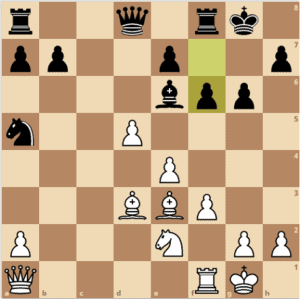
Black has seriously weakened his kingside. He is an exchange ahead, but that will only do him good if he makes it to the endgame. And, as Tarrasch once said, between the opening and the endgame, the Gods have placed the middlegame. There is an important difference between the properties of the middlegame and endgame. In the middlegame, dynamic factors are often much more important than in the endgame. Here we are talking here about things like a kingside attack and the initiative, about which Kasparov gave an important ‘rule’.
NOTE: In positions with the attack, the number of pieces attacking is more important than the value of the individual pieces.
This, of course, should be understood with some intelligence. It does not mean that, if the possibility of an attack arises, you should immediately give up your queen for a bishop and knight. Rather that when an attack is in full flow, for a brief moment everything else on the board becomes less relevant because the attack might finish the game at once. Therefore only pieces involved in the attack have a short- term importance. Secondly, it does not matter whether it is a queen or a knight giving checkmate, or if it is supported by a rook or a pawn.
Material concerns usually have less importance in positions with mutual attack when compared to the endgame, where domination is the important theme. When applied to the Sokolsky Attack, it means that for some time White will enjoy an initiative and an attack against the black king, which is positionally explained (justified even) by the absence from the defense of the a8-rook and especially the a5-knight.
All games given here start with 16.Bh6 Re8 17.Kh1, as this is what grandmasters of the current day choose with great success. There is no reason to believe that Black will not eventually be able to solve his problems, but for now there is a lively theoretical discussion going on around the tournament circuit.
Statistics
In 410 games, White scores 52%. Only 28% of the games have ended in a draw.
Theoretical?
Very much so. As we shall see, a slip or a new move can cost the en- tire game. When Black involves himself in the Classical Exchange Variation with 10…Bg4, he needs to be well prepared for this line. Jonathan Rowson wrote that there was no need to memorise the different variations. Well, things have changed and will probably never change back again. A Black player engaged in 10…Bg4 has no choice but to be prepared for this, if he does not wish to start off from a clearly worse position.
Most lines in the Grunfeld need not be remembered as exactly as those presented here, but as these lines stand out, an extra effort has been made to be up-to-date. Here I recommend 17…Rc8 as the best defense for Black. Analysis suggests that this move should guarantee a draw, but it’s not easy to predict the future of this line.
Post you may like: How to get better at chess
Grunfeld Modern Exchange
1.d4 Nf6 2.c4 g6 3.Nc3 d5 4.cxd5 Nxd5 5.e4 Nxc3 6.bxc3 Bg7 7.Nf3 c5 8.Rb1
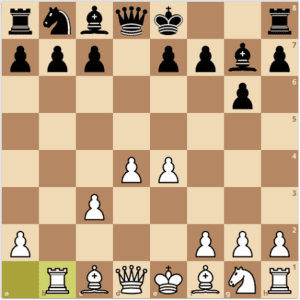
White plays Rb1
In the last 10-15 years there has been a change in the way the Ex- change Variation has been played. There has been a rapid development of the theory, especially in the sharp lines where White sacri- fices a pawn and allows Black to have two passed pawns on the queenside. But before we turn to them, let us take a look at why 8 Rbl! is such an important move. If White instead plays 8.Be2, then Black has 8…Nc6!.
This is a move that White always wants to meet with d4-d5, but here 9.d5 allows 9…Bxc3+ 10.Bd2 Bxa1. According to theory, White only has level chances after 11.Qxa1 Nd4 12.Nxd4 cxd4 13.Qxd4 f6. Actually, it looks like White should be careful, as the best he can possibly achieve seems to be simply to win the exchange back.
So instead of 8 Be2, White usually chooses 8.Be3 or 8.Rb1. After 8.Rb1play normally continues with 8…0-0 9.Be2
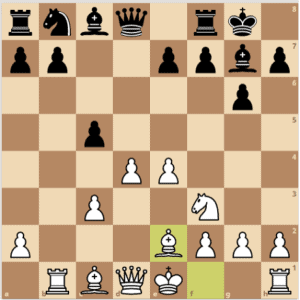
Now we have a myriad of possibilities. The main line is 9…cxd4 10.cxd4 Qa5+ 11.Bd2! Qxa2 12.0-0, after which there are again many op- tions for Black. Then there is 9…Nc6 10.d5! Ne5 11.Nxe5 Bxe5 12.Qd2, which is a large complex on its own. For the more quiet personalities there is 9…b6 and, finally, we have 9…Qa5, which looks like an inferior version of 9…cxd4 10 cxd4 Qa5+.
Post you may like: How to play the Sicilian Dragon
The Positional Approach with 9..b6
1.d4 Nf6 2.c4 g6 3.Nc3 d5 4.cxd5 Nxd5 5.e4 Nxc3 6.bxc3 Bg7 7.Nf3 c5 8.Rb1 0-0 9.Be2 b6
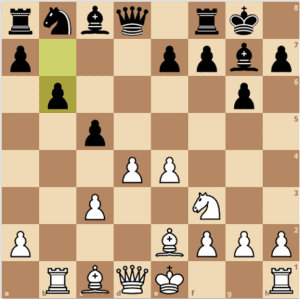
With this move Black is simply trying to develop his pieces. His main hope is to make it into an endgame where the passed pawns on the queenside will prove their worth. The problem is, of course, that White is better developed and has more space in the centre. To make it into the endgame without any scratches is not an easy job.
Statistics
The general passivity of this system for Black is reflected in the statistics. In 564 games Black has an overall score of 42% (38% losses, 39% draws and only 23% wins).
Theoretical?
Not really. Playing good moves is more important.
Illustrative Game:
Kantsler Vs Alterman (Tel Aviv 1999)
Black Plays 9…Qa5

This move is all but forgotten now, as it seems much more logical to play …Qa5 with check. The main argument for 9…Qa5 is that the exchange on d4 is no longer obligatory. With White’s lead in development, Black does well to keep the position somewhat closed.
In 369 games White has a strong score of 59% (winning 41% of the games, drawing 36% and only losing 23%). Statistically this is where a system comes close to being dubious, but then again statistics do not matter in an individual game, only an objective evaluation of the position and good play does.
More so than 9…b6, but less so than the following systems. It seems that Black must know a few lines well, while White should just decide on one line and stick to it.
The Russian Variation
In this section we shall deal with the most positional approach to the Grunfeld Defense and also one of the most popular over time. It was the main choice of such players as Smyslov and Botvinnik in the middle of the last century, and more recently it has been played many times by Karpov, Piket and Bareev, and occasionally also by Kasparov, Anand and Topalov.
The key position arises after:
1.d4 Nf6 2.c4 g6 3.Nc3 d5 4.Nf3 Bg7 5.Qb3 dxc4 6.Qxc4 0-0 7.e4
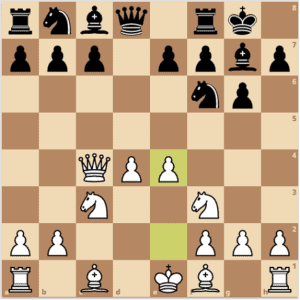
This position is truly played in the real spirit of the Grunfeld Defence. White has an overwhelming presence in the centre, but one should not be blind to Black’s lead in development. White has two knights and the queen out, but Black has developed knight and bishop, and has also castled. White is a couple of moves from castling kingside, and this gives Black some time to create a structure that suits him.
WARNING: Moving the queen early in the game is not necessarily a real improvement of the development, as the opponent can attack the queen and thereby gain time.
White has a strong occupancy in the centre, but the concept of the Grunfeld is that this is challenged and seen as a weakness as well as a strength. With his slight lead in development, Black is able to provoke weaknesses in White’s structure. This can be achieved in many ways, all recognized as fine by modern opening theory.
NOTE: Because of his lead in development, Black often has time to exert a real influence in the centre before White has finished his development.
Hungarian Variation (7…a6)
1.d4 Nf6 2.Nf3 g6 3.c4 Bg7 4.Nc3 d5 5.Qb3 dxc4 6.Qxc4 0-0 7.e4 a6
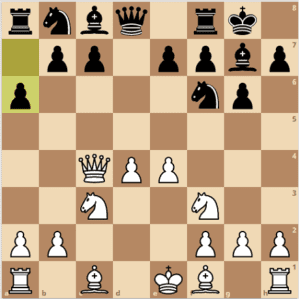
In this modern age 7…a6 is the main move. This is championed more than anyone by the Hungarian GM Peter Leko, who has used it for many years. Before him his trainer Andras Adorjan, mainly played it. It is interesting how two so different people and chess players can be attracted and over time become devoted to the same opening, for do we not play the moves that satisfy our inner personality? Some people have said that Leko is the only grandmaster who is completely free of style and, more than anything, plays according to the position. Whatever the reasons for their devotion to 7…a6, there is no doubt why it has been named the Hungarian Variation.
White has two main methods of playing against the Hungarian system. The first, starting with 8 Be2, is simply to develop and plan a2- a4 to exploit the loose bishop on b7. Here it is important that Black immediately creates counterplay against White’s centre. The second method is a frontal attack on the kingside starting with 8.e5 and including the aggressive move h2-h4.
Statistics
In the Hungarian Variation White has scored of 53% over 1006 games (36% wins, 34% draws and 30% losses). A very standard score, which underlines this variation as an absolute main line in the Grunfeld.
Theoretical?
This is a rather theoretical variation with 15-20 moves of theory in many cases. And Black is forced to remember his theory, as otherwise he can easily end up in trouble. If White plays slowly with 8 Be2, Black needs to know the temporary pawn sacrifice, while if White tries something with e5-e6 followed by h2-h4 or simply h2-h4-h5 on its own, Black will have to know what he is doing.
Then again, all lines in the Russian Variation are reasonably theoretical. White has a strong, broad centre, and if Black is unable to create counterplay quickly through his minimal lead in development, then he will be worse.
Illustrative Game Russian System-Hungarian Variation
Kasparov Vs Leko (Linares 2000)
